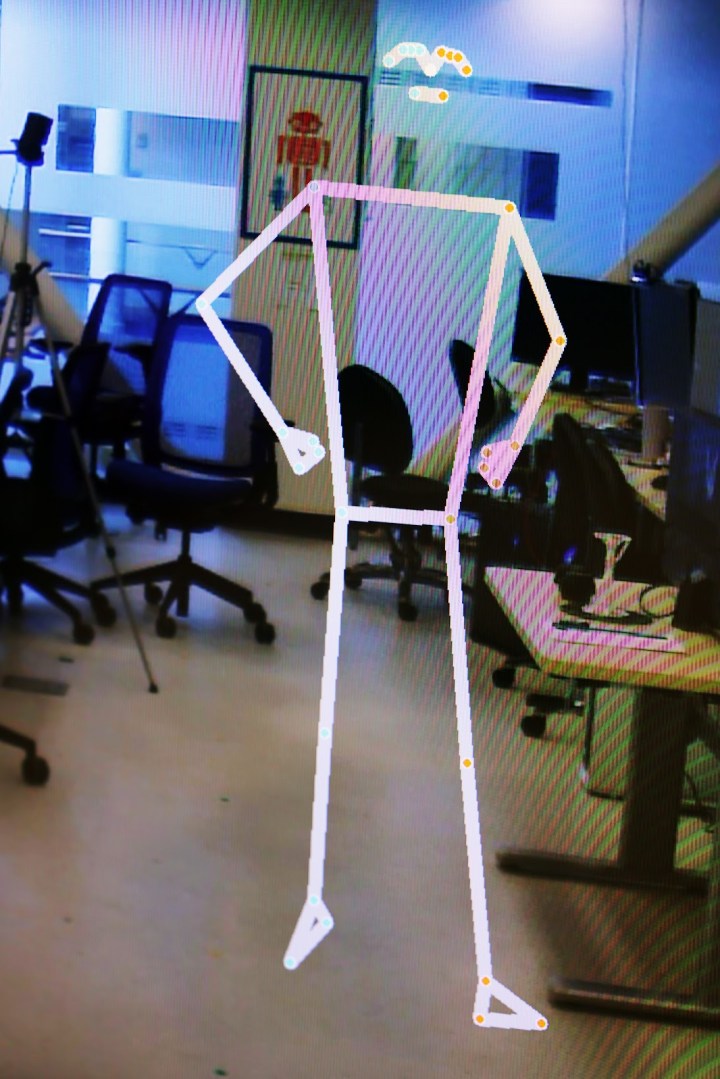Protecting personal privacy is increasingly important in an era where smart home devices are ubiquitous. PrivacyLens is a groundbreaking camera technology that promises to protect you from the risk of embarrassing, identifying photos and videos.
This protection also applies to images and footage collected by smart home cameras and robot vacuums.
Developed by engineers at the University of Michigan, PrivacyLens is set to revolutionize the landscape of privacy on smart devices.
How does PrivacyLens work?
PrivacyLens employs a dual-camera system that includes both a standard video camera and a thermal camera. PrivacyLens can identify individuals by detecting their body temperature within its field of view and then replace their likeness with a generic stick figure.
These stick figures accurately reflect real human movements, ensuring that devices that rely on cameras can continue to function without infringing on the privacy of individuals within their field of view.
“Most consumers don't think about what happens to the data collected by their favorite smart home devices. In most cases, raw audio, images and video are streamed from these devices to the manufacturer's cloud-based servers, regardless of whether the data is actually needed for the end application,” said Alanson Sample, associate professor of computer science and engineering at the University of Michigan and corresponding author of the study.
“Smart devices that can remove personally identifiable information before sensitive data is sent to private servers would be much more secure products than what we have today.”
 PrivacyLens' round lens captures standard digital video, while its square lens detects heat. The heat sensor improves the camera's ability to detect and remove people from the video. (Image courtesy of Brenda Ahearn, Michigan Engineering)
PrivacyLens' round lens captures standard digital video, while its square lens detects heat. The heat sensor improves the camera's ability to detect and remove people from the video. (Image courtesy of Brenda Ahearn, Michigan Engineering)
PrivacyLens aims to address the pressing issue of private moments being inadvertently captured and shared online.
For example, in 2020, a photo of a person on the toilet was posted online. The photo was taken by an iRobot Roomba, which entered the bathroom without the person's knowledge and uploaded the photo to a startup's cloud server. The photo then appeared in social media groups, according to an investigation by MIT Technology Review.
 Yasha Iravantchi appears as an anonymous stick figure on this monitor connected to PrivacyLens. (Image courtesy of Brenda Ahearn, Michigan Engineering)
Yasha Iravantchi appears as an anonymous stick figure on this monitor connected to PrivacyLens. (Image courtesy of Brenda Ahearn, Michigan Engineering)
Enhancing privacy and security in healthcare
One of the main uses for PrivacyLens is in healthcare, using the camera to monitor chronic health conditions and fitness routines at home.
PrivacyLens technology ensures that raw photos are never stored on the device or in the cloud, providing strong privacy protections that the engineering team hopes will make people more comfortable using cameras at home to monitor their health and fitness without worrying about privacy intrusions.
“Cameras provide a wealth of information for monitoring health, tracking exercise habits and other activities of daily living, and helping older people call for help if they fall,” said Yasha Iravanci, a doctoral student in computer science and engineering who will present PrivacyLens at the Privacy Enhancing Technologies Symposium on July 18 in Bristol, UK.
“But for those who would benefit from this technology, it creates an ethical dilemma. Without privacy mitigation, they would be forced to consider giving up their privacy in exchange for better chronic disease care. This device allows us to obtain valuable medical data while still protecting patient privacy.”
 From left, Alanson Sample, associate professor of computer science and engineering, and Yasha Iravanci, a doctoral student in computer science and engineering, prepare PrivacyLens for a demonstration in the Interactive Sensing and Computing Lab. (Image courtesy of Brenda Ahern, Michigan Engineering)
From left, Alanson Sample, associate professor of computer science and engineering, and Yasha Iravanci, a doctoral student in computer science and engineering, prepare PrivacyLens for a demonstration in the Interactive Sensing and Computing Lab. (Image courtesy of Brenda Ahern, Michigan Engineering)
Real-world applications and ethical implications
PrivacyLens is a major step forward for personal privacy and has the potential to be transformative in many areas by ensuring strong privacy protections.
The team conducted an initial study with 15 participants, and their findings revealed that using stick figure animations instead of live-action images made people more comfortable having cameras in their homes, even in their most private spaces.
Additionally, PrivacyLens includes a sliding privacy scale, allowing users to control how much of their face and body they want to censor.
“Our research shows that while some people may find blurring their face sufficient when they're in the kitchen, they may want their whole body removed from images in other parts of the home,” Sample explained. “We want people to have control over their personal information and who has access to that information.”
PrivacyLens has great potential beyond personal use: it could also be crucial in public settings, with automakers using it to help prevent self-driving cars from becoming surveillance tools.
Additionally, businesses that collect data with outdoor cameras can use PrivacyLens to comply with privacy laws and regulations.
“There are a whole range of tasks where you want to know when someone is there and what they are doing, and capturing their identity isn't going to help you accomplish that task, so why take the risk?” Iravanci said.
The breakthrough is published in the journal Proceedings on Privacy Enhancing Technologies.
Newsletter
Blueprint Daily
Get the latest news in engineering, technology, space and science with The Blueprint.

